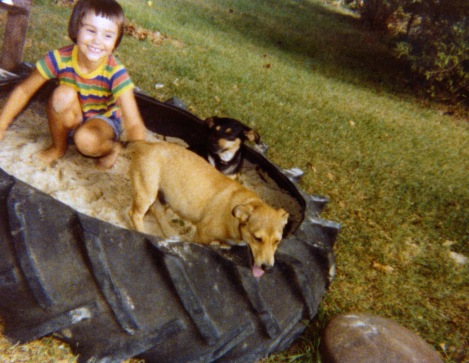
Growing up near my grandparents’ farm was simply magical. At times, the place was our own little back-country Camelot, with horses, cows, puppies, the tastiest tomatoes, the sweetest watermelons, a barn filled with hay bales perfect for climbing and a creek suitable for wading, splashing and floating.
Small wonder we never ran across a snake (literally) or broke an arm falling out of a tree, a fate that did befall a younger cousin when I was a teenager.
That small farmhouse was the steadiest structure in my life. While my parents tended to move every few years, my grandparents weren’t going anywhere. Even when I grew up and lived in the same spot for about 10 years, then another place for seven, those houses didn’t feel like home in the way that old brick house in South Mississippi did.
The smell of burning firewood will still transport me to the den, where my grandfather’s wood-burning stove steadily burned during the winter months. The taste of a simple yellow cake with chocolate icing puts me right back in the kitchen, licking the beaters as my grandmother put the finishing touch on a birthday cake.
That era has been over for a number of years – my grandfather died in 1999, and my grandmother in 2010. This fact didn’t really hit home for me until a few weeks ago, however, when my uncle and his wife finally sold the house and the rest of the land (my mom had sold her half, located across the highway, several years ago) to move closer to their daughter.
After completing a business trip in New Orleans earlier this month, I rented a car and met my mom to visit the homestead one last time before it was officially under new ownership.
I expected an emotional, memory-filled goodbye. What I faced, instead, was the realization that home wasn’t really home without the people. Without my grandfather sitting in his recliner, the den was just a room full of furniture. Without my grandmother mixing up family favorites for breakfast, lunch and dinner, the tiny kitchen was just another place to store plates and glasses.
Without a pasture filled with cows, or a barn housing a couple of horses, the back pasture was just a hilltop.
It’s gone, but the memories are priceless. I could choose to be sad, or I can choose to remember rolling around in the back yard with a litter of puppies (with only one case of ringworm during my entire childhood, thank you very much). I can share bittersweet memories, or tell everybody about the time I smacked the Shetland pony while my brother was riding to make her go fast for him (YOU’RE WELCOME and I don’t know why you still hold a grudge about this, Rob).
My fondest hope is that my uncle and aunt can create these kinds of memories for their grandchildren on their new place, which features a slightly smaller piece of land, but has all the potential of my childhood stomping grounds. Go forth, and make those kids remember your house with utter delight.










